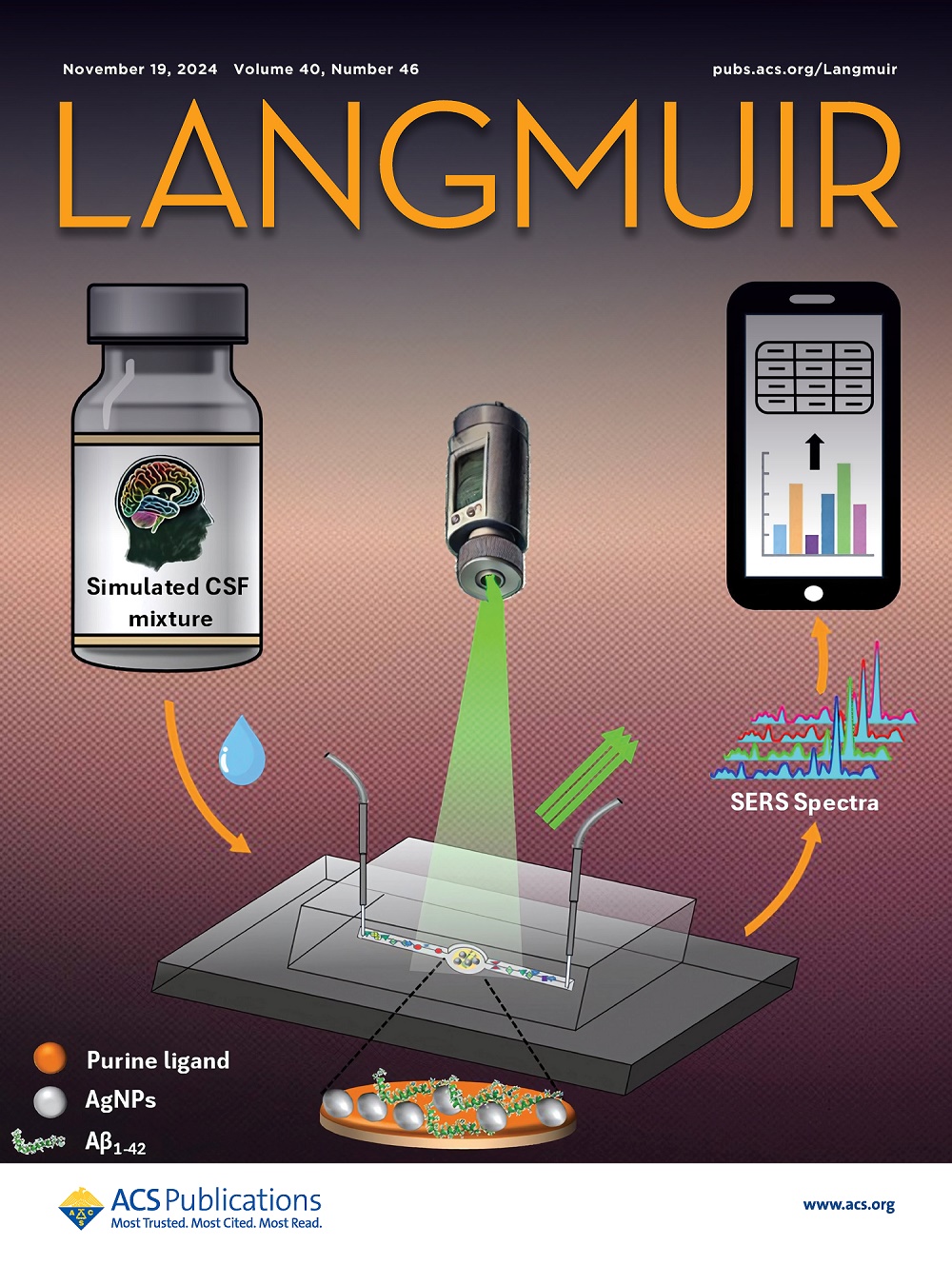The Effects of Sample Tilt on Atomic Force Microscopy Deflections.
IF 3.7
2区 化学
Q2 CHEMISTRY, MULTIDISCIPLINARY
引用次数: 0
Abstract
The atomic force microscope (AFM) is used to measure the forces between a probe particle mounted at the end of the flexible AFM cantilever and a given substrate or sample. Most existing models that describe the cantilever deflections in AFM experiments assume the sample is perfectly leveled. However, the samples are rarely, if ever, placed exactly perpendicular to the approach direction of the cantilever. Moreover, AFM cantilevers are typically mounted at a downward angle, resulting in a difference between the vertical deflections registered by the AFM and the deflections of the cantilever. The effects of both sample and cantilever tilt on the deflections obtained for the approach-to-contact (AtC) portion of an AFM deflection-distance curve have not been previously considered. Prior work only considered the impact of cantilever tilt on the deflections obtained for the pull-off (PO) portion of the AFM deflection-distance curve. Using a recently developed model of the AtC and PO, which accounts for both the attractive and repulsive interactions between the probe and sample, as well as the surface roughness of the substrate, we present a computational study of the effects of both sample and cantilever tilt on the AtC and PO deflections. We also perform AFM experiments with probes of two different sizes and a sapphire substrate held at various sample tilt angles. Overall, the experimental results are in good agreement with the predictions of the model. The PO deflections exhibit the expected decrease as sample tilt angle is increased, while the AtC deflections are weakly dependent on sample tilt angle, except at large angles. Both the experiments and model predictions indicate that as long as the sample is leveled as best as possible, sample tilt has no significant effect on the AtC deflections and essentially no impact on the PO deflections.样品倾斜对原子力显微镜偏转的影响。
原子力显微镜(AFM)用于测量安装在柔性原子力显微镜悬臂末端的探针粒子与给定基板或样品之间的力。描述AFM实验中悬臂挠度的大多数现有模型都假设样品是完全水平的。然而,样本很少,如果有的话,放置在与悬臂的接近方向完全垂直的位置。此外,AFM悬臂通常以向下的角度安装,导致AFM记录的垂直挠度与悬臂挠度之间存在差异。样品和悬臂倾斜对AFM偏转-距离曲线的接近-接触(AtC)部分获得的偏转的影响以前没有被考虑过。先前的工作只考虑了悬臂倾斜对AFM挠度-距离曲线拉离部分挠度的影响。利用最近开发的AtC和PO模型,该模型考虑了探针和样品之间的吸引和排斥相互作用,以及衬底的表面粗糙度,我们提出了样品和悬臂倾斜对AtC和PO挠度影响的计算研究。我们还使用两种不同尺寸的探针和蓝宝石衬底在不同的样品倾斜角度进行AFM实验。总体而言,实验结果与模型的预测结果吻合较好。随着样品倾斜角度的增加,PO偏转呈现出预期的减小,而AtC偏转对样品倾斜角度的依赖性较弱,除了大角度。实验和模型预测都表明,只要样品尽可能地水平,样品倾斜对AtC偏转没有显著影响,对PO偏转基本上没有影响。
本文章由计算机程序翻译,如有差异,请以英文原文为准。
求助全文
约1分钟内获得全文
求助全文
来源期刊

Langmuir
化学-材料科学:综合
CiteScore
6.50
自引率
10.30%
发文量
1464
审稿时长
2.1 months
期刊介绍:
Langmuir is an interdisciplinary journal publishing articles in the following subject categories:
Colloids: surfactants and self-assembly, dispersions, emulsions, foams
Interfaces: adsorption, reactions, films, forces
Biological Interfaces: biocolloids, biomolecular and biomimetic materials
Materials: nano- and mesostructured materials, polymers, gels, liquid crystals
Electrochemistry: interfacial charge transfer, charge transport, electrocatalysis, electrokinetic phenomena, bioelectrochemistry
Devices and Applications: sensors, fluidics, patterning, catalysis, photonic crystals
However, when high-impact, original work is submitted that does not fit within the above categories, decisions to accept or decline such papers will be based on one criteria: What Would Irving Do?
Langmuir ranks #2 in citations out of 136 journals in the category of Physical Chemistry with 113,157 total citations. The journal received an Impact Factor of 4.384*.
This journal is also indexed in the categories of Materials Science (ranked #1) and Multidisciplinary Chemistry (ranked #5).
 求助内容:
求助内容: 应助结果提醒方式:
应助结果提醒方式:


